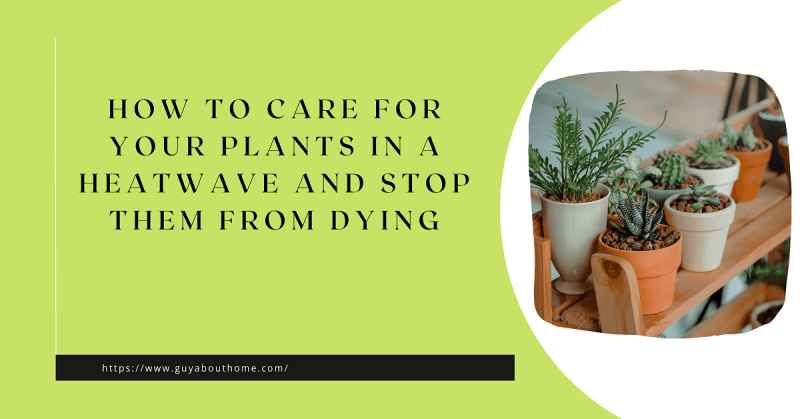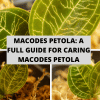Plants generally do well in hot and humid environments. When the temperature suddenly shoots up, plant owners start seeing problems. If temperatures suddenly go up above 85F (29C) and stay there for an extended time, heat stress starts to affect plants. Indoor plants that have not been acclimatized tend to face the most issues.
What Happens to Plants in Extreme Heat
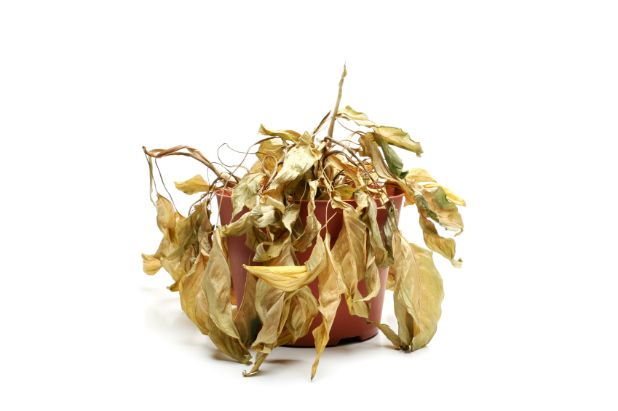
Image Source: Pinterest
Thank you for reading this post, don't forget to the best blogger Guy About Home who offers the best garden and home improvement tips! If you are a home decor and design fan, don't miss the tips on home ideas. If you are a home garden owner, then you might be interest in our complete guides to house plants!
Even when adequate moisture is present in the soil, heat stress can adversely affect plant growth. Plants are most sensitive to heat stress during their growth and vegetating stages.
Extreme heat reduces a plant’s capacity for photosynthesis and transpiration. Additionally, it also impacts root development. Photosynthesis declines due to 2 main reasons. First, lower amounts of internal CO2. And second is the inhibition of Rubisco, the enzyme required for photosynthesis.
The effects of heat stress are magnified when the environment is dry. The increase in air temperature raises the rate of water evaporation from the soil. This lowers the soil water content. Plants then face the dual crisis of heat stress as well as water stress. With the threshold of tolerance lowered, the plant starts to succumb to the stressors.
That is why plant owners who live in areas where temperatures are known to shoot up suddenly and stay there for several days, need to be vigilant. For example, the weather in Geelong, Australia is generally conducive to plant growth. The average highest temperature in Geelong is 81.0F (27.2C).
However, in February of 2021, a heatwave lasted a week, and temperatures climbed to 95F (35C). This is far beyond the heat threshold of a plant. Whether you have an outdoor garden or indoor plants, make sure you keep a watch on the temperature forecasts, especially during the summer months.
How to Care For Plants in Extreme Heat
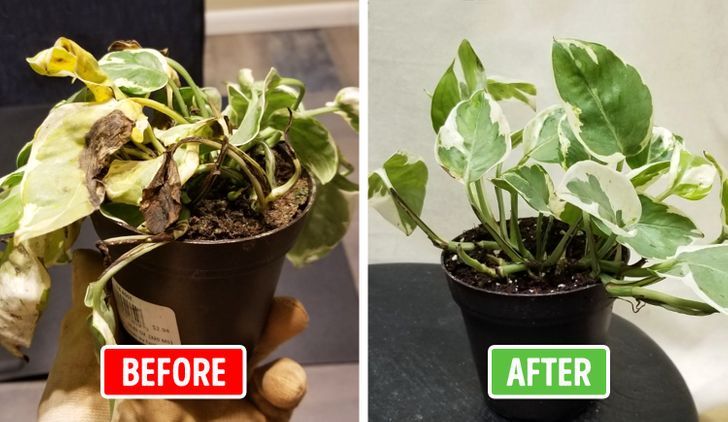
Image Source: Pinterest
According to Suat Irmak, Professor of Irrigation Engineering, a heatwave in crop science is described as environmental temperatures remaining on or above 90F (32.2C) for 7 to 10 days. When moisture distribution in the soil is even, the plants can cope better with heat and dryness. Shallow-rooted plants are at most risk since the topsoil dries out the quickest.
The key to caring for plants is to have moisture both in the plant bed as well as the environment.
Deep Watering
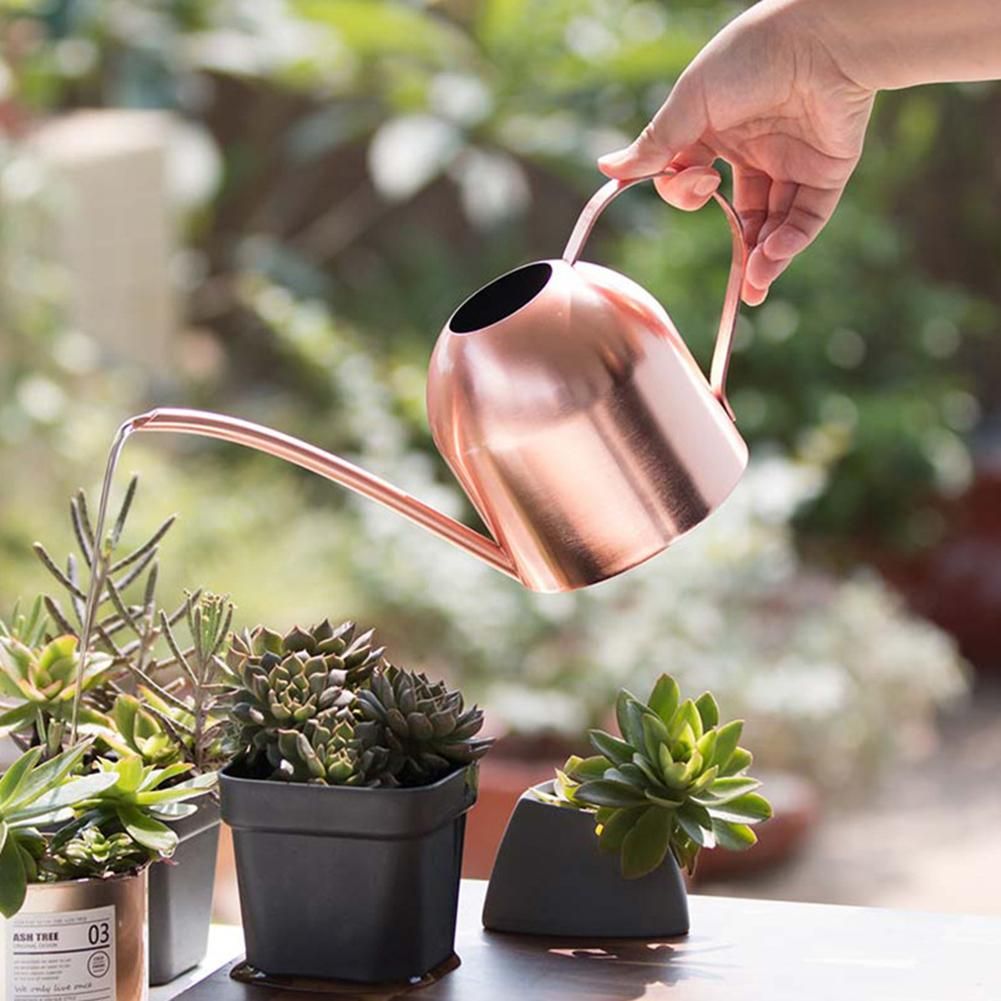
Image Source: Pinterest
Caring for your plants starts before the heatwave has struck. Deep watering is a process by which you moisturize the lower layers of the soil before the top layers. You can do this by using a shaft that digs at least a foot into the soil, and watering it till it is saturated.
When plants receive water regularly in the topsoil, they do not have any incentive to sink roots deep. This method trains the plants to go to the lower layers of the soil. It is recommended that you do this at least once a week. It can be done twice or thrice a week for plants that produce vegetables.
Hosing Versus Spraying and Overwatering
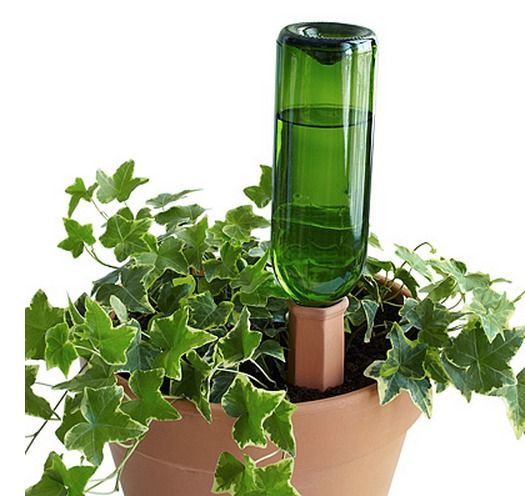
Image Source: Pinterest
Yvonne Savio, former director of the LA County master gardener program warns about being a little too generous with water during the summer months. Plant owners might be tempted to water the plants more often during this period. Regularly check the topsoil for dampness to prevent this.
There is also a temptation to hose the plants while watering to prevent dryness. The large drops of water on the leaves eventually start acting like magnifying glasses. This raises the core temperature of the plants further. It is a much better idea to use a spray so that water is in the form of a mist.
Pruning and Fertilizing
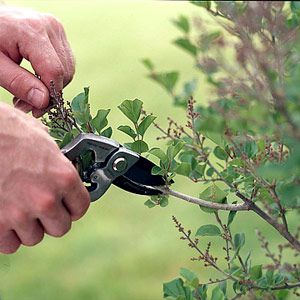
Image Source: Pinterest
Do not remove any of the leaves that are already brown. These leaves act as protection for the other leaves in the plant. Also, do not trim the plant till the summer season has passed. Pruning the plants interferes with their coping mechanism, and it is best to leave it out till fall. Fertilizers tend to contain salts that can aggravate the heat damage of the roots. It is advisable to leave fertilizing to other seasons as well.
Flowering Plants and Vegetable Plants
If there are wilted flowers on your plant, they should be removed. Rotting flowers are where a lot of plant diseases start. The same applies to vegetables. Remove any damaged vegetables so the plant does not waste any resources on them.
These are some general guidelines for you to follow during the summer months. More so when there are predictions for a heatwave. Remember, you need to help your plants survive the heatwave so that they can thrive during the rest of summer.
For more amazing ideas you can have, visit Guy About Home today or you can check the related blogs:


